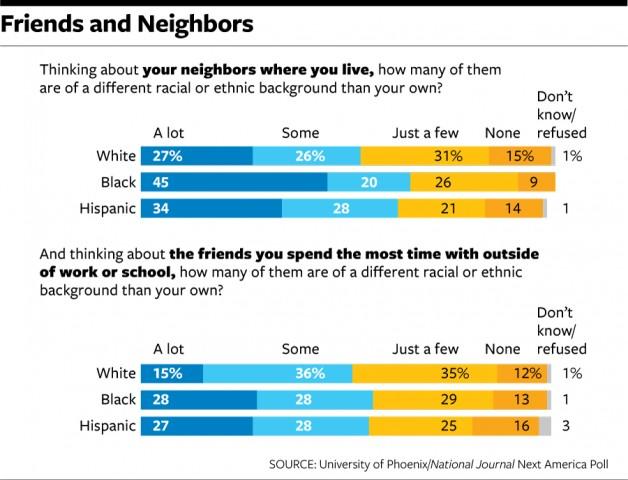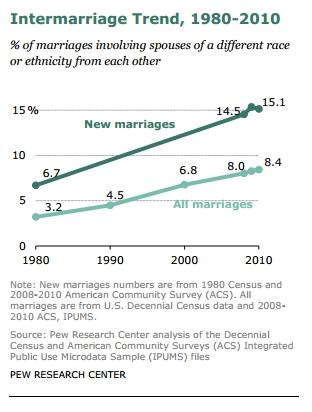Racial attitudes, the generation gap, and the political perfect storm
Over the past few weeks I’ve been watching closely the recent efforts by the National Journal to prominently showcase stories, polls, and news events that highlight demography and population change. With a particular focus on politics, the “Next America” project, beginning with the articles written by Editorial Director Ronald Brownstein, is an “unprecedented effort to explore the significant political, economic and social impact of profound racial and cultural changes.” I was grabbed by some of the findings from their latest article “Diversity Now.”
It is no surprise to anyone that the nation’s population is changing in a fundamental way. As a whole, the population is growing older, and this change is overlaying deep and enduring racial and ethnic divides in this country. The young are racially and ethnically diverse; the old are predominately white. In a few decades the U.S. Census Bureau projects that the United States will become “majority-minority.” These fundamental changes will bring tremendous political challenges, as they have already begun to do. Perhaps not since the 1960s, when the boomers first entered the political scene en masse, will this country experience such generational conflict. Think of current political struggles over the national debt, old-age entitlement spending, or immigration and then imagine what the political debate around these issues will look like in a decade or two when more of today’s young people enter the political arena. The 2008 presidential race between Obama and McCain somewhat reflected this racial and generational gap. Obama, America’s first President of black descent, won with a minority of white voters while earning more than 80 percent of the support of non-whites; a strong majority of young people while declining support with older ages.
A recent National Journal poll brought some data to this narrative. On a positive note, it seems that Americans are intermingling a lot more than they used to. A majority of whites and non-whites claim that they have friends and neighbors of a different racial or ethnic background than their own.

These results complement findings from the Pew Research Center on the increasing prevalence, and acceptance, of inter-racial marriages. The younger generations are not seeing race the same way the older generations are, and this growing acceptance of inter-racial marriages means that not only are the younger populations more diverse, these individuals will be increasingly multi-racial and multi-ethnic as well.

But this mixing of people is not translating into a mixing of political attitudes across the entire population (at least not yet). One of the most striking statistics from the National Journal’s most recent poll is that less than a quarter of Whites agree that the up-coming “majority-minority” status of the United States is something that is good for the country, while half of their fellow Hispanic and black citizens agree. The senior population, white men without a college degree, and white Republicans tend to drive the racial and ethnic disenchantment among whites as a whole, the Journal finds.
Whites also disagree that racial discrimination is a major reason for the income gap between the races. Between 24 and 27 percent of Whites think that racial discrimination is a major cause of income differences while solid majorities of Hispanic and black Americans think the same. Brownstein says that values of personal responsibility are particularly important among whites in explaining income differences and that there is a strong correlation between these views and attitudes towards government intervention and the social safety net.
It is looking as though 2012 will look a lot like 2008 in terms of race, age, and political preferences. There seems to be a growing polarization not only in political ideology but between these demographic and cultural groups as well. Brownstein states, “attitudes about the nation’s changing racial composition are reinforcing the familiar ideological differences that divide the two parties—and fuel their intensely polarized competition.”
The two biggest demographic trends in the nation, aging and growing diversity, may well create the conditions for a political perfect storm and a sectarianism not seen in this country in at least a half a century. But demography is not destiny. The political parties have opportunities to realign their coalitions, reach out to different people, and shape their agendas to appeal to broader segments of the population. Not only would this be good for the country but our nation’s prominence in the world may depend on it. In all of the vitriol in our politics today, we tend to forget that all of our fortunes are tied together. While I closely watch the National Journal’s “New America” project I hope their research and articles not only examine the deep schisms and inequities that stubbornly pervade the nation, but to highlight where common ground can be reached.


